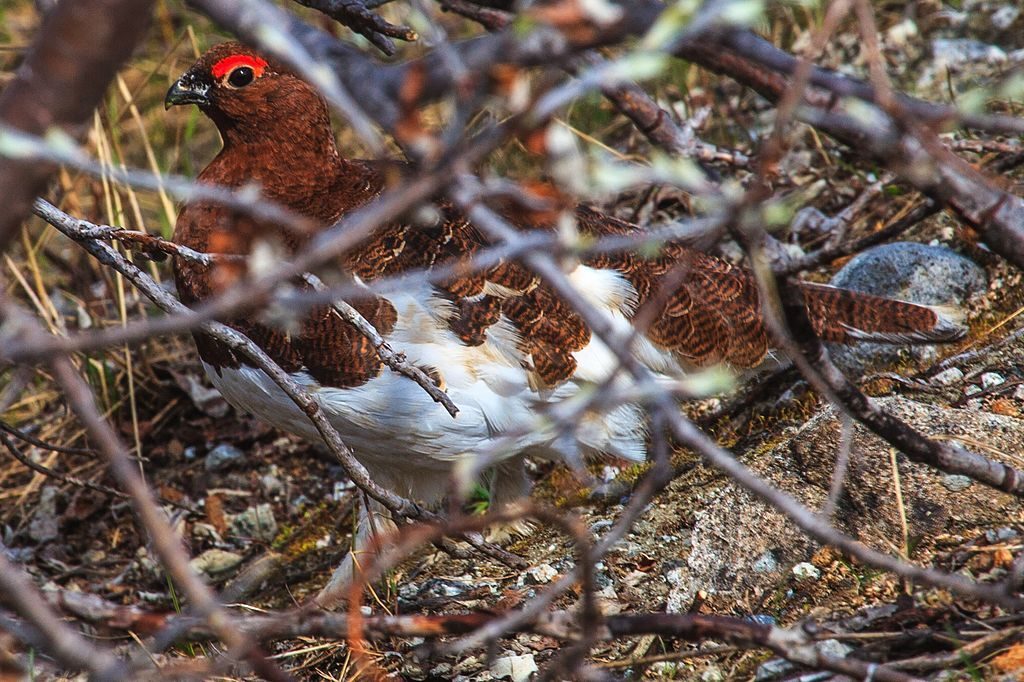
Alaska Birding Tour with PIB: Nome vicinity, 22 June 2019
Willow ptarmigans (Lagopus lagopus) are ground dwelling birds that live where it snows about half the year. They’re also the favorite prey of many species so they need to be able to hide in place.
Their plumage provides camouflage but it has to be clever because the ground changes color from white in winter, to mottled during snow melt, to brown in summer. Ptarmigans solve this by molting continuously from April to November.
Their basic plumage is winter white to match the snow. It allows them to stand still and disappear …
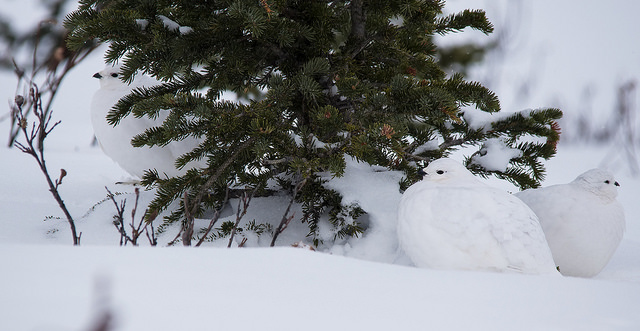
… or burrow in the snow with only their heads exposed.
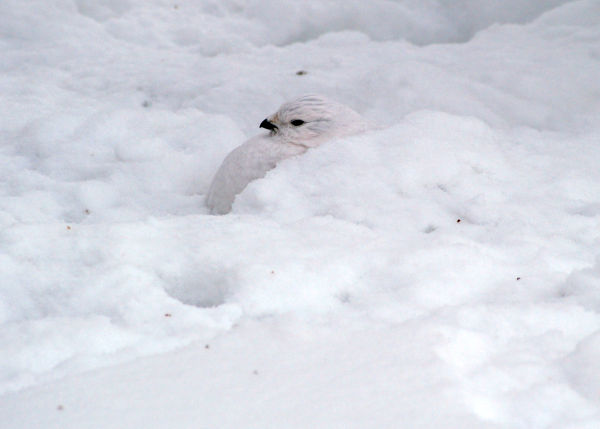
In April the snow starts to melt and the ptarmigans start to molt. The male looks like a snow patch as he begins his courtship clucking.
In June the male and female are incubating eggs. They still match the ground; they’re brown.

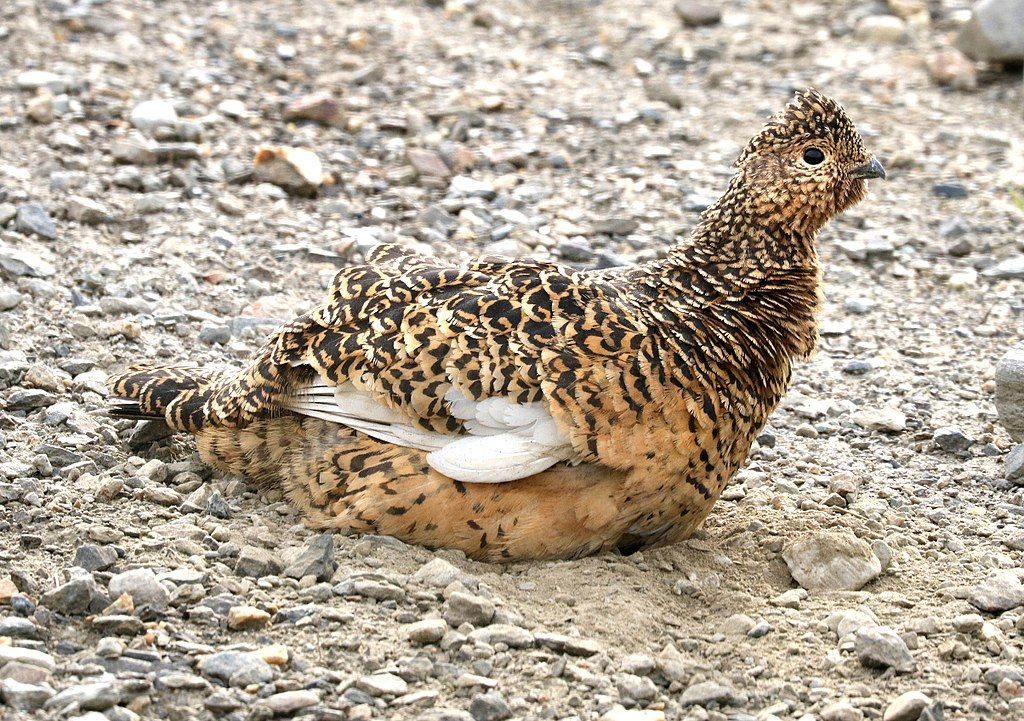
Their chicks match the ground, too.
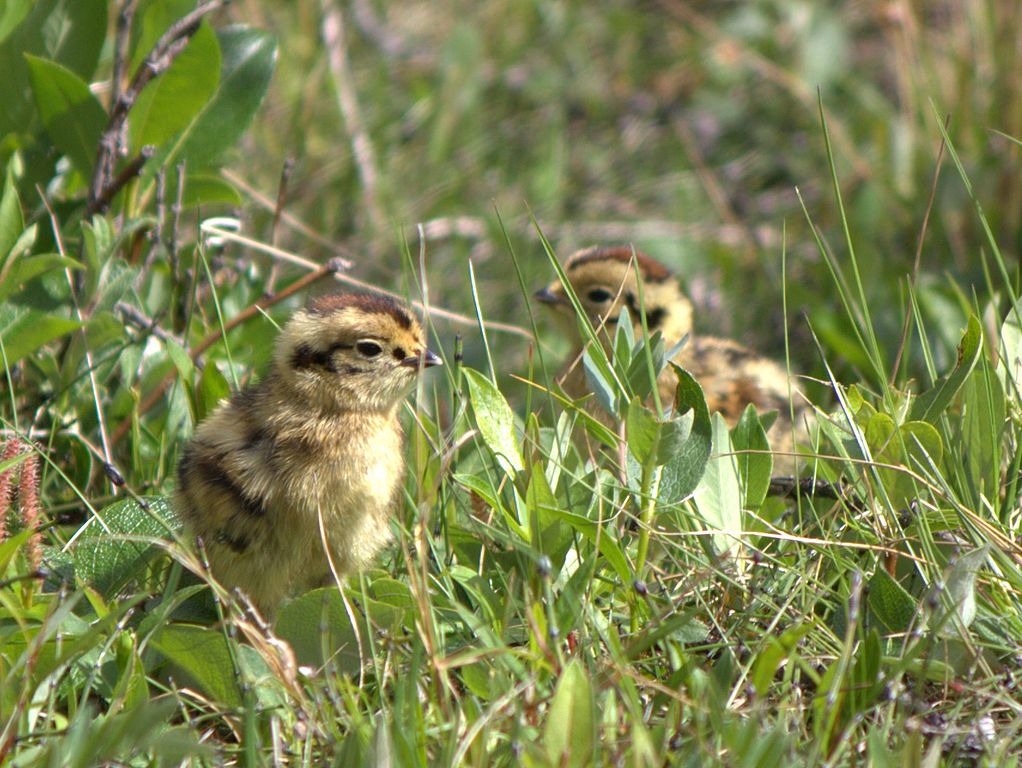
By late summer they look patchy again. Their plumage gets ready for the first snow.
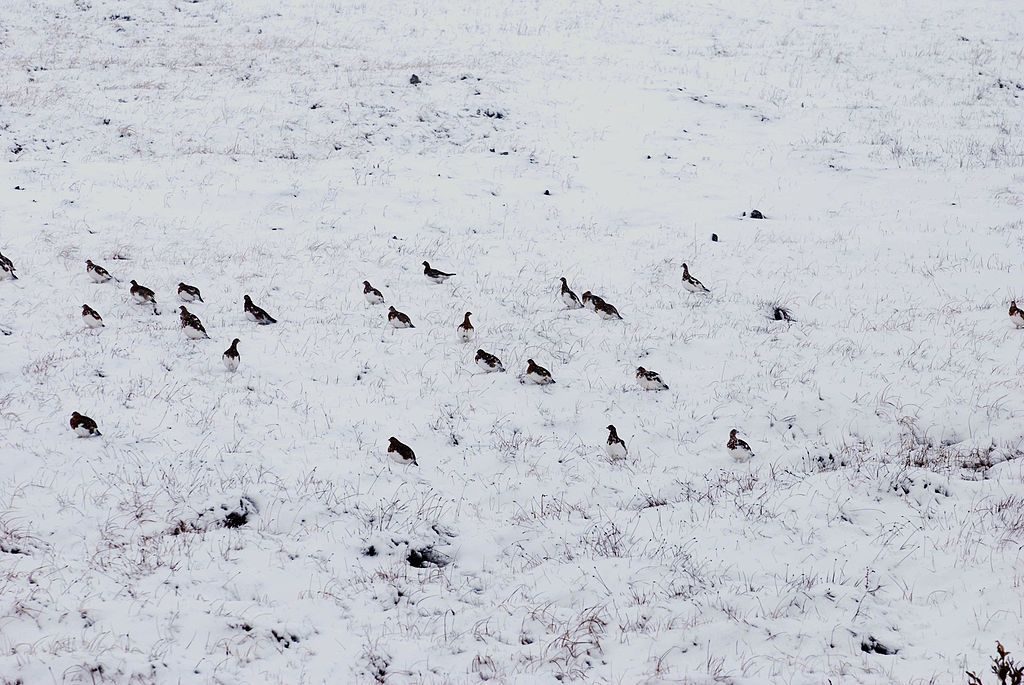
In November they’re back to winter white.
Ptarmigans change with the seasons.
(photos from Wikimedia Commons, and Dan Arndt via Flickr; click on the captions to see the originals)
what is going to happen to their molting with the climate change? Will they be able to molt faster/slower or change the timing?
Anne Marie, there is always variation among individuals. Those that molt into proper camouflage will survive and breed. Ideally, evolution will happen fast enough to keep up.